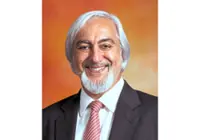Work-ready: Employers will always want graduates who can hit the ground running. — 123rf.com
I WAS fortunate to attend the Quacquarelli Symonds (QS) Higher Ed Summit: Asia Pacific 2023 in Kuala Lumpur last month.
QS is the company behind the QS World University Rankings often used in university league tables.
Already a subscriber? Log in
Save 30% OFF The Star Digital Access
Cancel anytime. Ad-free. Unlimited access with perks.




